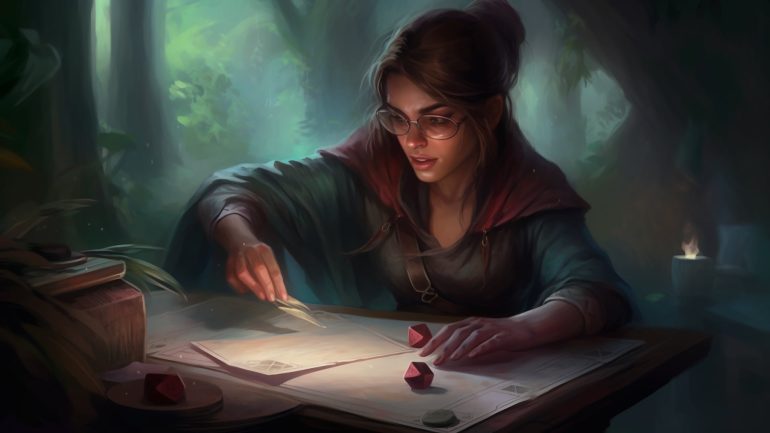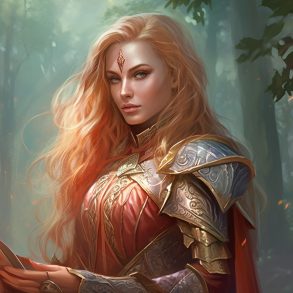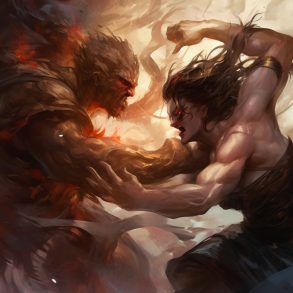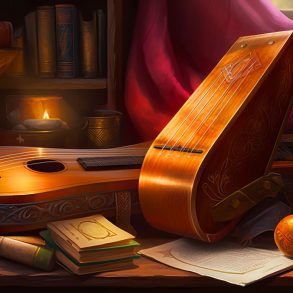The part of the rules that every player needs to know, but no player ever wants to use, death saving throws are what stand between you and a fresh character sheet in most instances. But how do they work?
How Death Saving Throws work
Whenever you start your turn with 0 HP you must roll a death saving throw, a special type of saving throw that isn’t tied to an ability score, for most characters this is just rolling a d20 with no modifiers. If you roll a 10 or higher you succeed, if you roll a 9 or lower you fail, with your character needing to succeed three times to become stabilized. However, three failures will cause your character to die.
Successes and failures can happen in any order, they don’t need to occur back-to-back, and the number of successes and failures you have accrued reset to zero when you regain any hit points or become stable.
If you roll a 1 on the d20, this counts as two failures, and if you roll a d20 you immediately wake up with 1 HP and can take your turn as normal. If you take any damage whilst at 0 HP it counts as a failed death saving throw, if that damage comes from a critical hit it counts as two failures. Note! Whilst you are at 0 HP any attack within 5 feet of you counts as a critical if it hits you, and attacks against you have advantage, these things are because of the unconscious condition.
Do all creatures get Death Saving Throws?
All player characters get saving throws by default, however, it isn’t that straightforward for other creatures. Most DMs just have monsters die at 0 HP, with special NPCs and powerful villains acting as exceptions to this. Some DMs prefer all creatures to follow the death saving throw rules, so be sure to check with your DM when the campaign starts!
How to improve your Death Saving Throws
For most characters, rolling a death save will be like the toss of a coin, but fear not as here are some ways to improve your odds at succeeding or otherwise improve them:
- Defy Death, the Undying Warlock’s 6th level ability, allows you to regain 1d8+ Con modifier HP when you succeed on a death saving throw.
- Diamond Soul, the Monk’s 14th level ability, will give you proficiency in death saves and allow you to reroll a fail by spending 1 Ki point.
- Favored by the Gods, the Divine Soul Sorcerer’s 1st level ability, allows you to add 2d4 to a saving throw once per short or long rest.
- A friendly Artificer can use Flash of Genius to add their Int modifier to your saving throw, they cannot help themselves in this way, however.
- Soul of Artifice, the Artificer’s 20th level ability, grants them a bonus to all saving throws equal to the number of items they’re currently attuned to.
- A magic item that gives a bonus to all saving throws, such as a Luck Stone or Cloak of Protection, will give you a modifier for the save.
- Being within a friendly Paladin’s Aura of Protection would allow you to add their Cha modifier to your roll. Note: This doesn’t benefit the Paladin’s death saves, as the aura doesn’t function when they’re unconscious.
- If you are inspired by a Bard you can use their Bardic Inspiration die, however, you must already be inspired as an unconscious creature cannot hear.
- The Lucky feat, providing your DM allows it, would allow you to spend a luck point to reroll the d20.
- Lucky, the Halfling racial trait, would allow you to reroll a 1 on the saving throw. This would allow you to avoid taking two failures at once and potentially turning the failure into a success. Note: This doesn’t protect you from rolling two 1s back to back.
How to roleplay Death Saving Throws
Need some help roleplaying Death Saving Throws? Here are some examples to help you out:
- As the life fades from your body, you feel your soul slipping away. Roll your Death Saving Throw to see if you can cling on to the thread of life.
- Your vision blurs and your breathing becomes shallow. Your fate hangs in the balance as you make your Death Saving Throw.
- Your body goes limp and your mind starts to drift. Roll to see if you can resist the call of the afterlife.
- The wounds you’ve sustained are grave and the pain is overwhelming. Roll to see if you can fight through the agony and stay conscious.
- Your allies look on in horror as you fall to the ground, barely holding on to life. Roll your Death Saving Throw to see if you can make it through this dire situation.
- Your heart rate slows and your consciousness begins to slip away. Roll to see if you can rally your strength and push through the darkness.
- The darkness creeps in and you feel the chill of the afterlife. Roll your Death Saving Throw to see if you can resist the pull of death.
- Your breathing becomes shallow and your heart rate slows. Roll to see if you can muster the strength to hold on for just a little longer.
- The world around you fades to black and your body goes limp. Roll to see if you can rally your willpower and survive this deadly encounter.
- Your wounds are severe and your body is failing you. Roll to see if you can fight off the grasp of death and live to see another day.
This is where we’d normally say hopefully this article helped you, but we hope you won’t ever need to use this information! If you enjoyed this article then check out our how to play section, or if you want to help out your allies making death saves then check out our Paladin 5E guide. Until next time, may your death saves be above average and your general stores always have healer’s kits in stock.
When to make a death save in 5E?
At the start of your turn when you have 0 hit points and haven’t been stabilized.
What happens when you crit on a death save?
When you roll a 20, you immediately regain 1 hit point. When you roll a 1, you take two failures, instead of just one.






